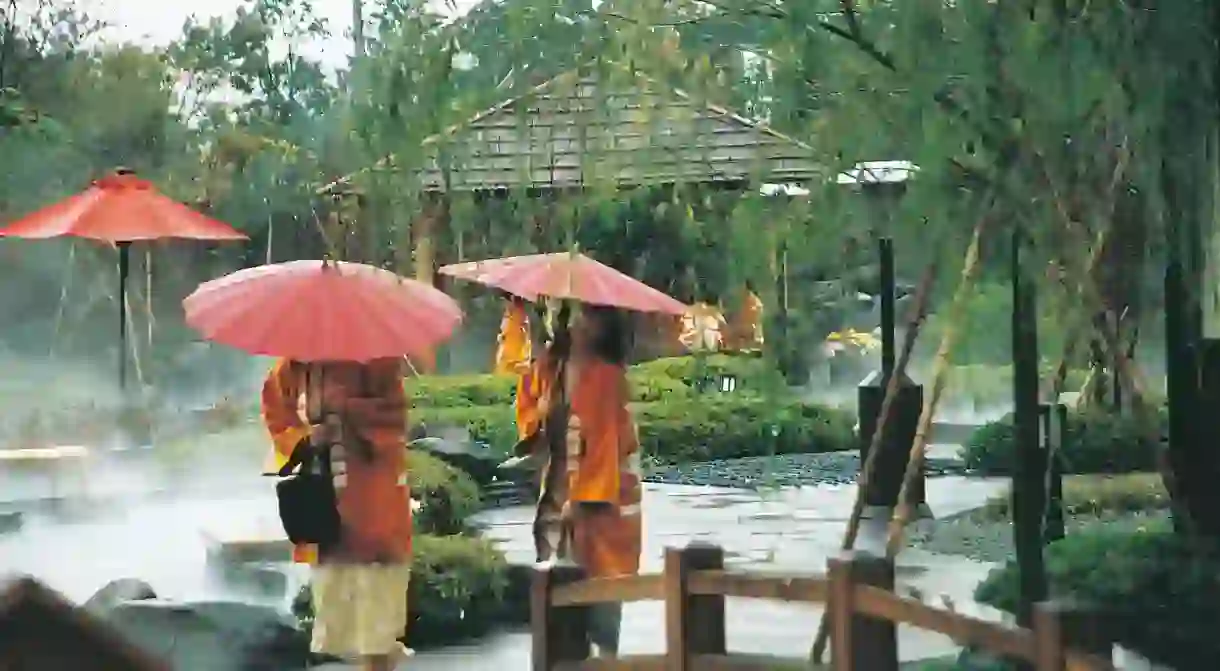Culture Trip's Wellness Guide to Tokyo

Culture Trip’s Wellness Guide to Tokyo brings you a ready collection of travel ideas inspired by what you love. Discover things to do, where to stay and the best spots to eat and drink.
From matcha ceremonies that combine mindfulness with antioxidant-rich green tea, to public onsens where friends gather to relax and unwind – Japanese culture naturally prioritises rituals and traditions that enhance wellbeing. Perhaps that’s why Japan has the second-longest life expectancy of any country.
In Tokyo, bubbling onsens are commonplace, and you don’t have to look far to find a pristine, peaceful garden that sets the scene for a meditative moment. You can add depth to your daily matcha habit by learning from a tea master, then make a mean ramen (without the meat).
Culture Trip’s wellness guide proves hectic Tokyo still embodies the healthiest elements of a Japanese lifestyle.
Things to do in Tokyo
Relax at Odaiba Ōedo Onsen Monogatari
Spa

Unwind at Toshimaen Niwa no Yu
Spa

Take a break from the city at Chichibu-Tama-Kai National Park
Park

Tour Sensō-ji Temple
Buddhist Temple

Asakusa’s Sensō-ji Temple is one of Japan’s most popular attractions, and for good reason. Besides being aesthetically arresting – think multi-level pagodas, manicured gardens and red chochin lanterns – Sensō-ji is also the oldest temple in Tokyo. Dip into its history with this guided tour led by local experts who know every legend, myth and fact surrounding the site. Afterwards, explore the nearby craft shops and food stalls.
Experience a Japanese tea ceremony
Buddhist Temple

Encouraging mindfulness, gratitude and hospitality, the ancient tea ceremony is a Japanese ritual dating back over 1,000 years. In this immersive tea ceremony experience, Gion-ji Temple’s head priest leads you step by step through the ritual. Begin by boiling water in an iron kettle and whisking matcha, then sip your tea from beautiful ceramics and finish off with wagashi sweets. You’ll leave feeling refreshed, calm and ready to tackle Tokyo.
Food and drink in Tokyo
Try Komakata Dozeu’s signature dish
Restaurant, Japanese

Enjoy kaiseki cuisine at KITAOHJI
Restaurant, Japanese
Make vegan ramen and gyoza
School

Japanese cuisine is not exactly renowned for being vegan-friendly, but this cooking class proves some dishes work just as well without animal products. A knowledgeable teacher will walk you through how to make crisp, golden, veg-stuffed gyoza parcels as an appetiser, followed by a steaming, satiating bowl of meat-free ramen. Pleasingly simple to cook, these Japanese classics will impress your friends back home during your next dinner party.
Where to stay in Tokyo
Luxury relaxation at Hotel Chinzanso Tokyo
Luxury

With its slightly out-of-the-way location, Hotel Chinzanso Tokyo provides a moment of respite from the city. The stellar spa and the indoor pool are great places to unwind, but the standout feature of this hotel is its spectacular grounds. Stretching almost seven hectares, this area is full of colourful blooms, dainty streams and wildlife. Navigate your way to Hotel Chinzanso Tokyo’s 100-year-old teahouse for a matcha ceremony presided over by a tea master, ring the bell and make a wish at the Shiratama Inari Shrine, and keep an eye out for the Seven Gods of Fortune – stone statues that each embody an element of success and wellbeing.
Tradition meets modernity at Andon Ryokan
Ryokan

Peace and quiet at Ryokan Kamogawa Asakusa
Boutique Hotel, Ryokan

Kamogawa Asakusa is a ryokan outfitted with all the customary trappings: tatami flooring, futon beds, personal tea sets and lightweight yukata robes. Enjoy a Japanese breakfast of egg, rice, soup and grilled fish in the morning and a soak in the on-site onsen to wind down before bed. The hotel’s location is another big plus: it’s only a two-minute walk from Kaminarimon Gateway and Sensō-ji Temple (luckily, the crowds clear out before nightfall, making it a peaceful place to rest and recuperate).
Want to create your own travel itinerary? Add a place to My Plans to get started.













